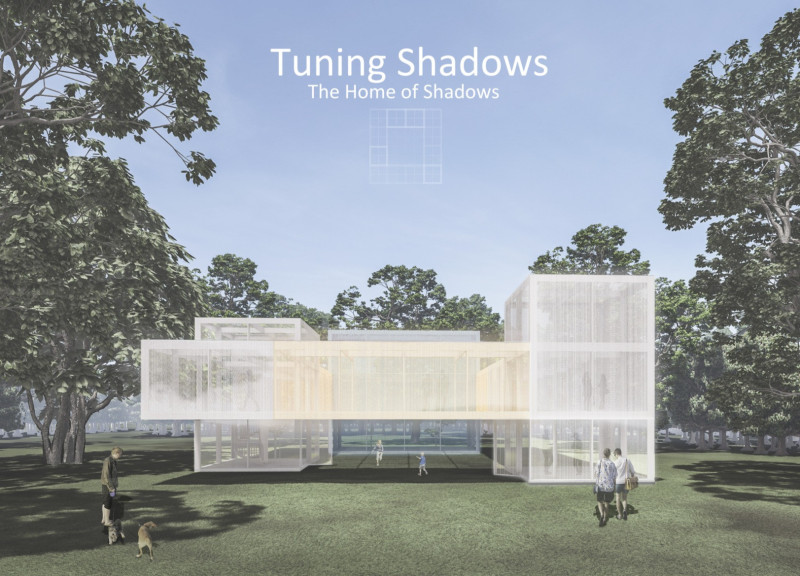5 key facts about this project
The site in Chuncheon, Gangwon-do, South Korea, showcases a residential design that centers on how light and shadow interact within living spaces. The design emphasizes the concept of shadow hierarchy, inspired by the natural effects of clouds and trees on light conditions. Every aspect of the layout is crafted to respond to the sun’s path, promoting a connection between the interior and the surrounding environment.
Orientation and Spatial Configuration
Living spaces are organized with careful attention to orientation. The main areas, including the kitchen, dining room, and workroom, face south to capture maximum sunlight. In contrast, the bedroom is aligned in an east-west direction, which helps differentiate how light influences each area. This arrangement creates distinct atmospheres that cater to both daily activities and moments of rest.
Materiality and Shadow Play
Fabric serves as the primary material throughout the home, playing an important role in shaping the experience of light and shadow. Lighter fabrics produce subtle shadows, while denser materials cast deeper shadows. This choice of fabric impacts not only the room's appearance but also how it feels when inhabited. It furthers the project’s exploration of the relationship between shadow and space, inviting a unique sense of depth and texture.
Color Temperature and Atmosphere
A thoughtful approach to color temperature enhances the mood of each space within the home. Active areas feature a cooler color temperature of 6500K, while restful areas are bathed in a warmer 2700K light. This strategy helps create environments that support various functions throughout the day, reinforcing the design's aim of promoting comfort and well-being.
A notable aspect of the design becomes apparent as natural light shifts during the day. The changing patterns cast by the fabric choices create an experience that evolves, providing a continuous connection to the time of day and the outside world. The interiors transform, responding to the rhythms of nature while offering a calming space for those who dwell within.



















































